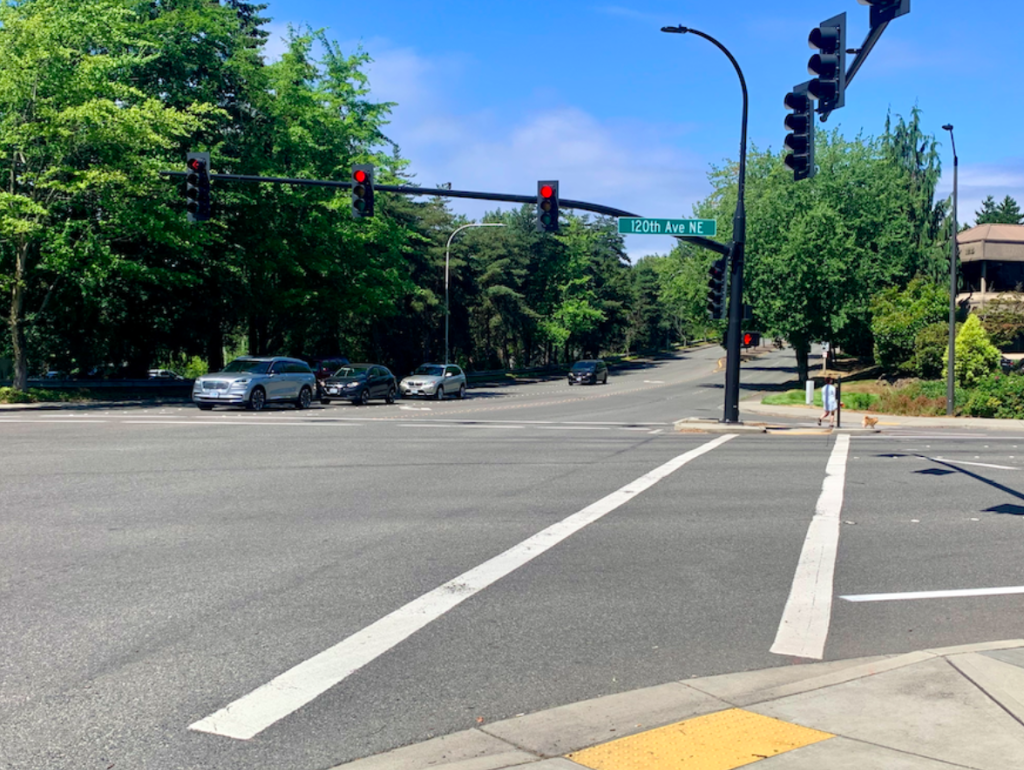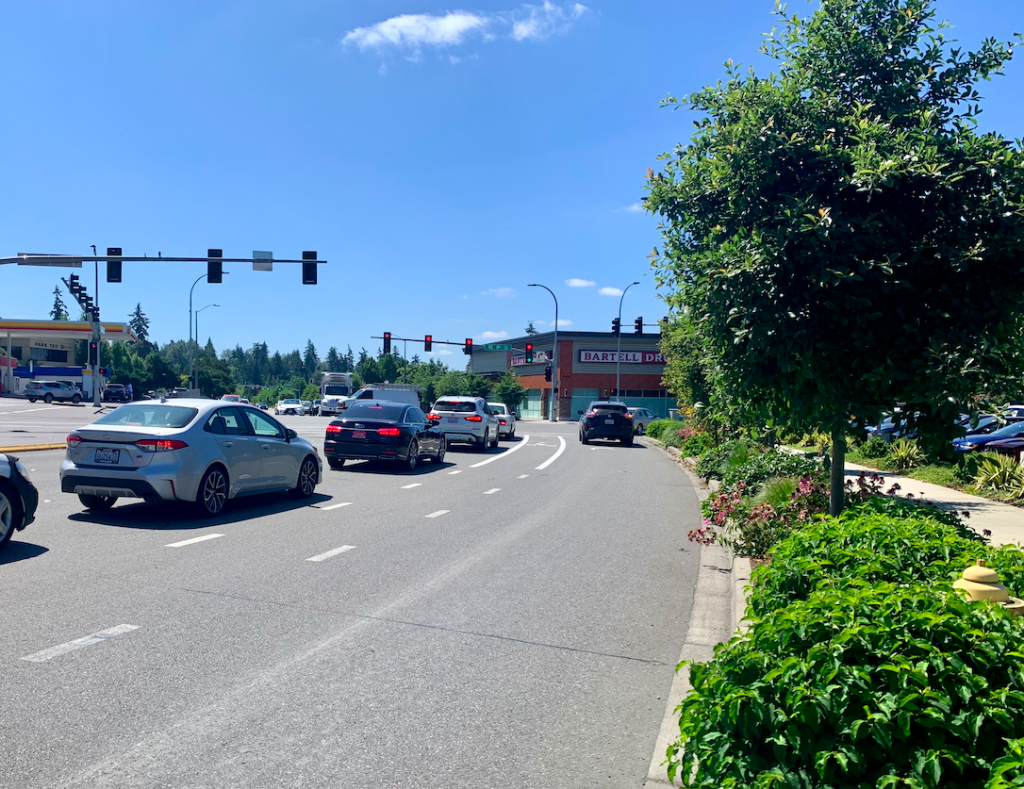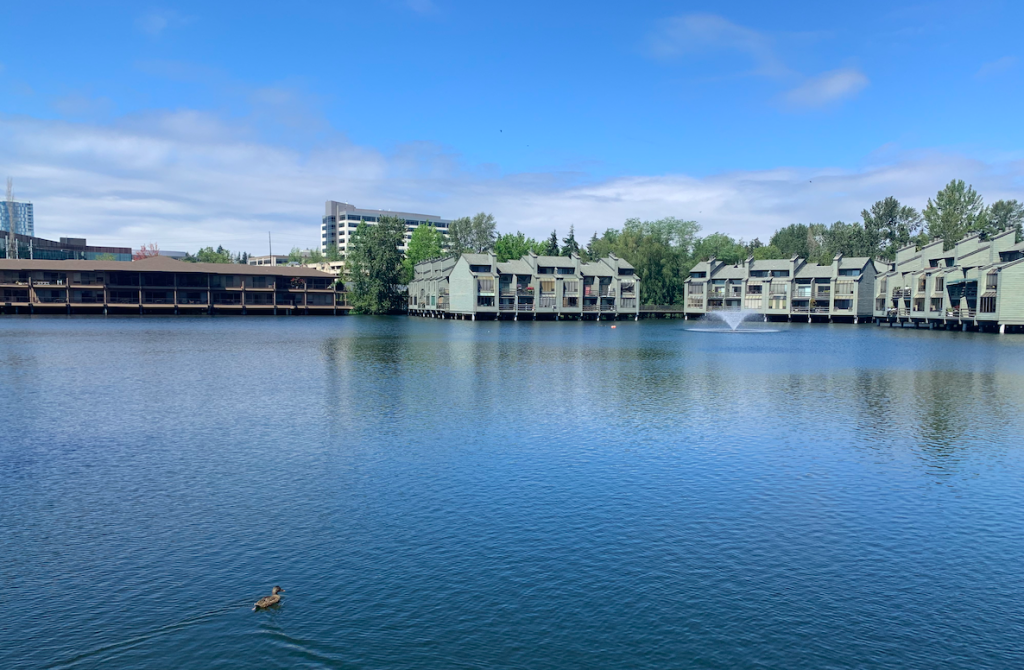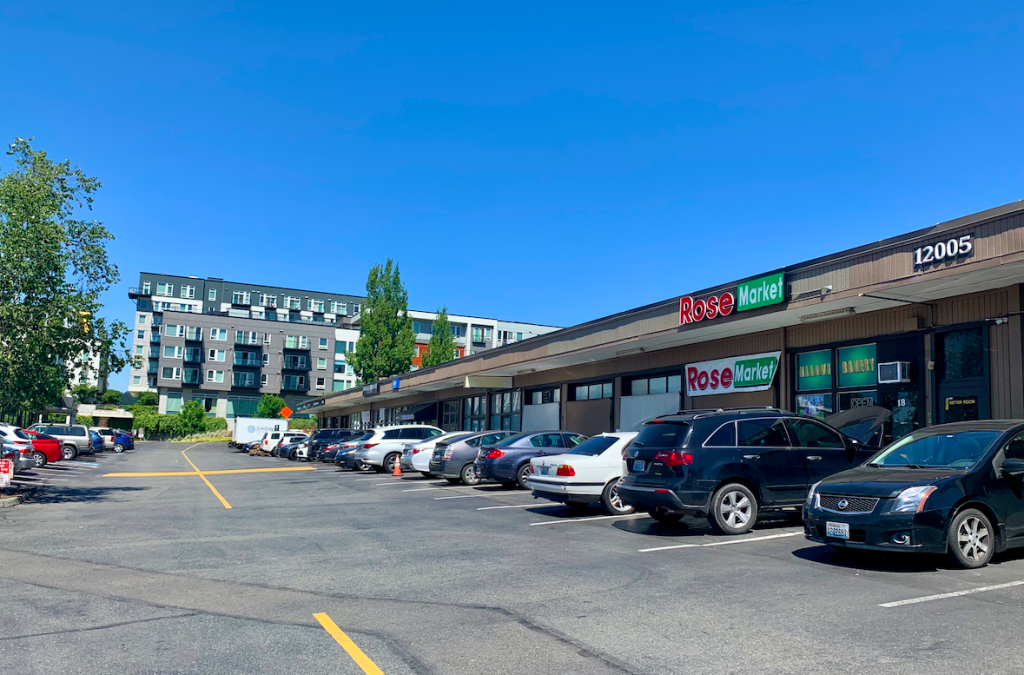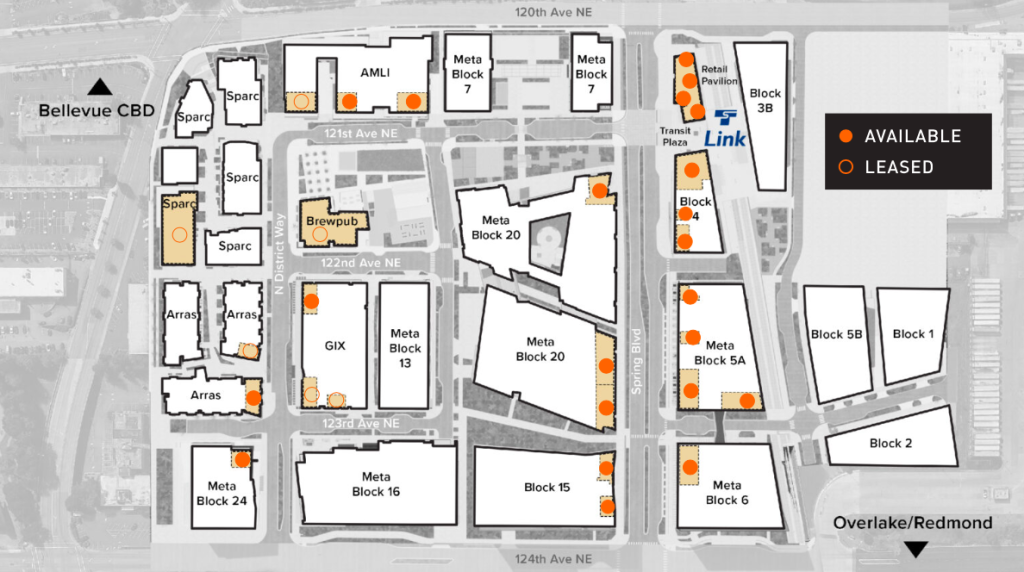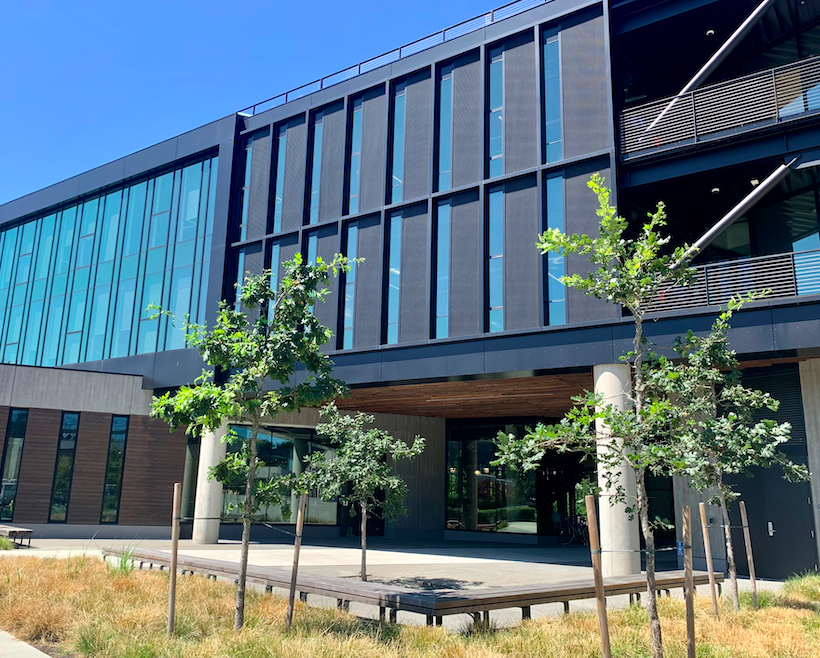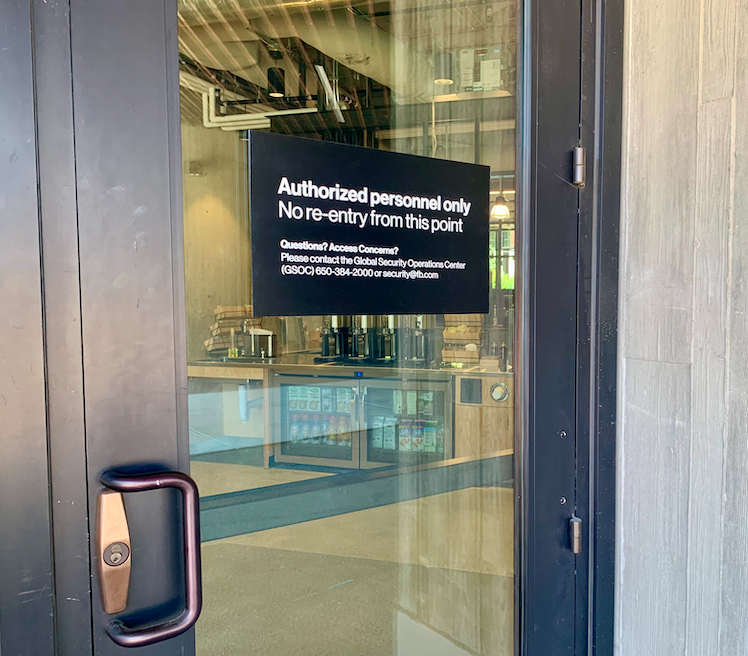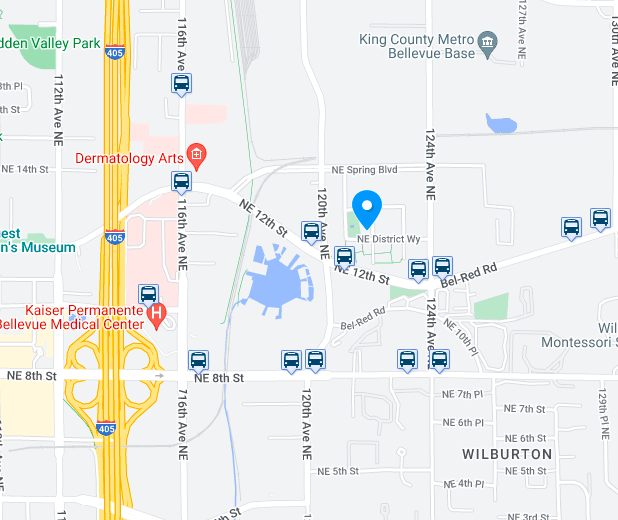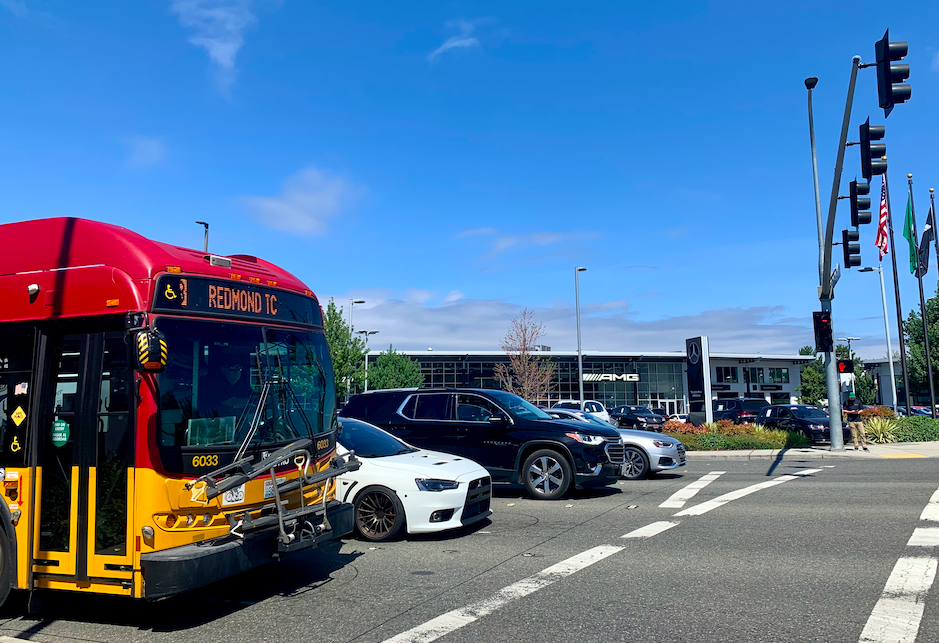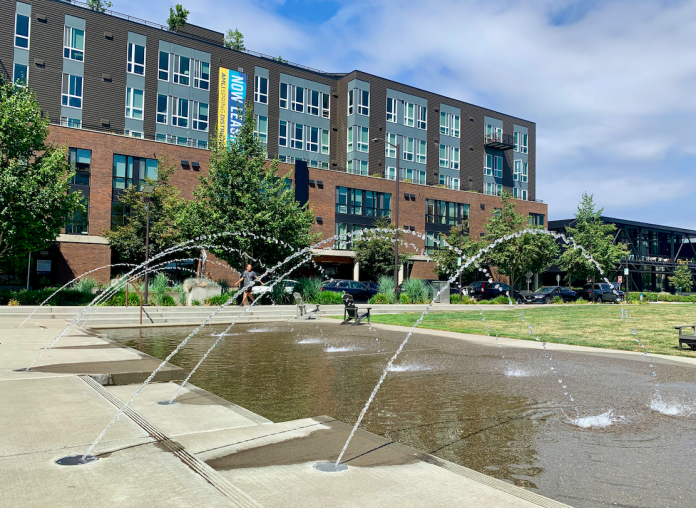
The Spring District started as an ambitious plan to transform 36 acres of warehouses and surface level parking in Bellevue’s BelRed neighborhood into a thriving urban village anchored on transit. Expected to unfold over a 15-year period, Seattle-based developer Wright Runstad and Company and Shorestein Properties of San Francisco anticipated constructing 29 buildings with heights ranging from 11 to 14 stories, about two acres of parks and open space, and two new interior streets.
Gregory Johnson, CEO of Wright Runstad, was quoted at the time as explaining that the name “Spring District” was chosen for the project because of its connection to “a season of transformation.” Developers also liked how the term “district” invited comparisons to neighborhoods like the Pearl District in Portland, which have “successfully transitioned from industrial to mixed-use.”
At the outset, buzz surrounding the project was considerable. When unveiled in 2007, the Spring District proposal was viewed as a catalyst with the potential transform the entire 900-acre BelRed corridor, which had been suffering from disinvestment and job loss as the light industrial businesses that had previously populated it moved their operations south to cities like Auburn and Kent to save money.
At the groundbreaking ceremony in 2013, Johnson described how the Spring District would offer a natural fit for workers in Bellevue’s burgeoning tech sector. “Potential employees are looking for urban settings with walkability where they can ride their bike, [live] in close proximity to work, and [with] access to good schools. That’s what we’re really [hoping for] in this 36 acres in Bellevue. We’re crafting a neighborhood, not just a building,” he said.
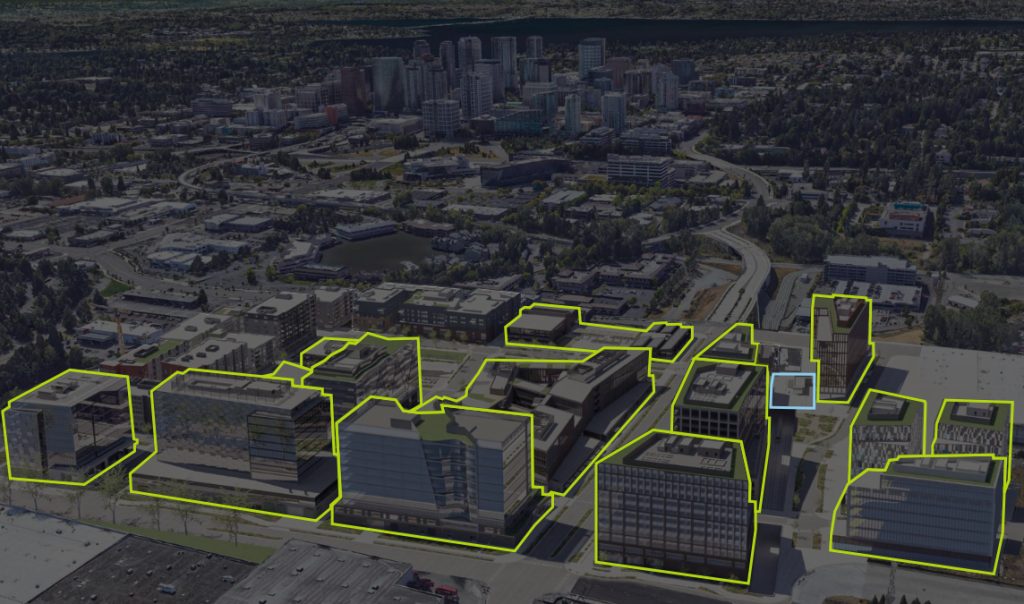
By 2028, the new neighborhood was supposed to offer homes to 3,000 residents and workspace to 18,000 office workers and 200-some retail and hospitality workers. In addition to high capacity transit, improved biking and walking infrastructure would make it safe and easy to travel in Downtown Bellevue without relying on a vehicle. Back in the beginning, planners were hopeful that a light rail station would one day be built adjacent to the site, although the alternative of bus rapid transit was also considered acceptable. Fortunately, in 2011 Sound Transit committed to building a Spring District Station as part of East Link light rail expansion.
So now nearly a decade in, with most phases of construction finished and a light rail station nearing completion — even if the opening of the East Link extension has been delayed — where does the Spring District stand? Has it lived up to its promise of creating a dense, urban neighborhood in Bellevue — or has it departed from that original vision into something else entirely?
More apartment complex than neighborhood
Recently after a biking tour of the Wilburton light rail station area hosted by The Urbanist and Complete Streets Bellevue, I had the chance to hang out at Bellevue Brewing in the heart of the Spring District. It was a beautiful summer day, and the patio was packed with people. In the adjacent central park, a baby shower featuring a rented inflatable bouncy house had gathered an assortment adults and kids. Still something felt off. Despite so much effort having been put into designing the Spring District, I felt more like a visitor to an expensive apartment complex than a growing neighborhood.
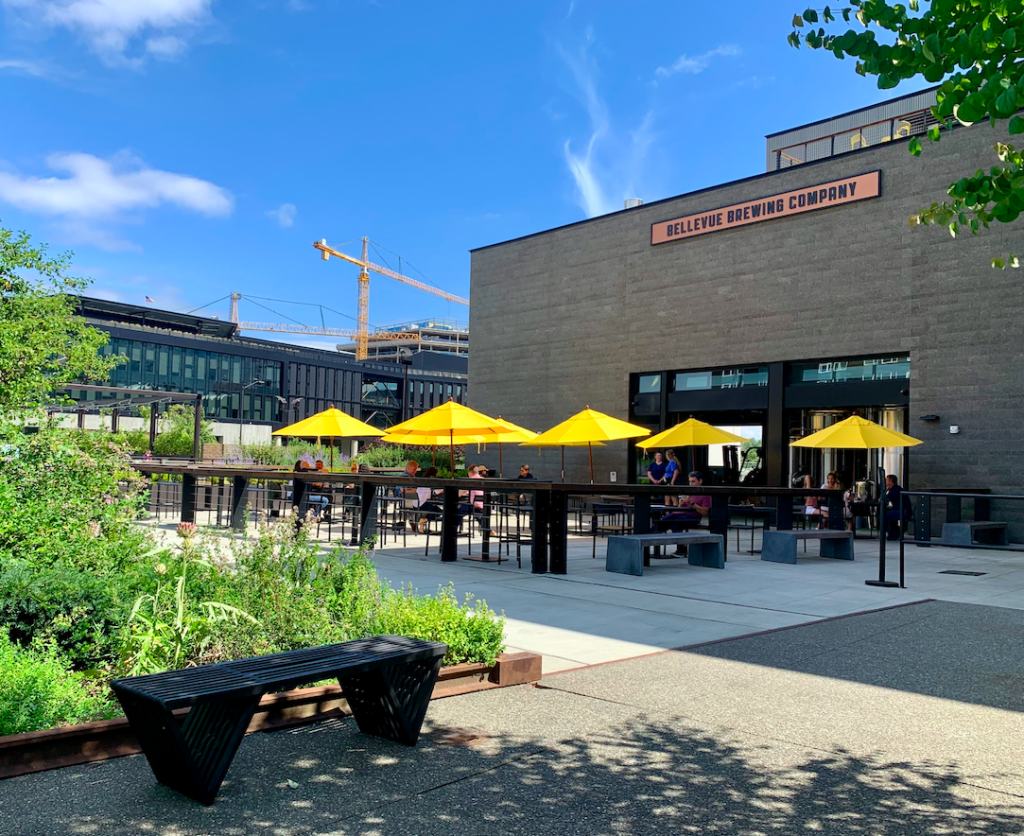
And I was not the only one to feel this way. While at the brewery, a couple who have lived in the nearby residential section of Wilburton for decades shared with me that not only had they never visited the Spring District before, they had had no idea the neighborhood even existed prior to our event. When I told them about the early comparisons that had been made between the Spring District and Portland’s Pearl District, they first looked surprised, then laughed, pointing out the vacant storefronts and glossy homogenous surrounding buildings. They were people invested in making Bellevue a denser, more vibrant city, but when they left it was unclear when — or if — they would return.
This was my third visit to the Spring District in a matter of a few weeks, and a pattern seemed to be unfolding. As someone who lives in Seattle, I’m often hesitant to critique certain kinds of development in the Eastside, and this is especially the case for development that aims for density, walkability, and transit access like the Spring District does. But the more time I spent in the Spring District, the more keenly I felt the open gulf between the aspirations on which it had been created and the place it has managed to become so far.
This was disappointing to me because, like many people, I had hoped for so much more from the new neighborhood, having gotten swept up by its promise during my first visit in 2018. I had headed to the Spring District to report on an event on greening commutes at the Global Innovation Exchange, an education partnership between the University of Washington and Tsinghua University in China. In retrospect, the tech-infused idealism of the day probably cast a rosy glow over the construction I viewed during that first encounter.
An island apart
Returning five years later, I was struck by how much of an island the Spring District continues to be. One of the great things about the Pearl District is how it connects seamlessly into other dense Downtown Portland neighborhoods. But the Spring District has virtually nothing it can connect to. Surrounded by the car-choked thoroughfares of 120th Avenue NE, NE 12th Street, and 124th Avenue NE, to the west, south, and east, leaving the Spring District on foot means first crossing, then walking along a major roadway for about a half mile before arriving at a destination like Uwajimaya or Whole Foods — the two closest grocery stores to the development.
Located closer to the south is a strip mall, which used to include the now shuttered Rose Persian Market. The strip mall, however, is dominated by businesses like auto repair shops and trophy engravers. The layout of the strip mall is also grouped along a central parking lot, making it fairly uncomfortable to navigate as a pedestrian.
Lake Bellevue, located on the opposite side of 120th Avenue NE, is entirely surrounded by private development with only a few access points for pedestrians. Apart from offering the Crab Pot and I Love Sushi restaurant for seafood lovers, there’s not much for visitors to experience there. Although hard to imagine today, the lake is a naturally occurring body of water whose history predates the city of Bellevue. Today, however, rather than offering a natural area to enjoy and explore, it exists as another factor increasing the Spring District’s isolation.
The areas described above also happen to have the most amenities for Spring District residents to access. To the north is the sizable Safeway dairy processing and distribution center, as well as a 25-acre Sound Transit train operations and maintenance yard. The Safeway site is a remnant of Safeway’s once much larger holdings in the area — the entire 36 acres on which the Spring District was built was once owned by the grocery giant. But the Sound Transit site is a recent addition to the area and one that generated its fair share of controversy.
The City of Bellevue actually came out publicly against the operations and maintenance facility, arguing that the area should be preserved for more residential and commercial development near the future light rail station. However, the location was ultimately selected by Sound Transit because an alternative site considered in Lynnwood would have cost $3 million more to operate annually and could have engaged the agency in a legal battle with the Edmond’s School District, which owned the land. Still the decision came as a heavy blow to proponents of the Spring District.
“It’s just ironic that the train system itself would damage the kind of development it was meant to support,” said Claudia Balducci, then Mayor of Bellevue and a member of the Sound Transit board in an interview with the Seattle Times.
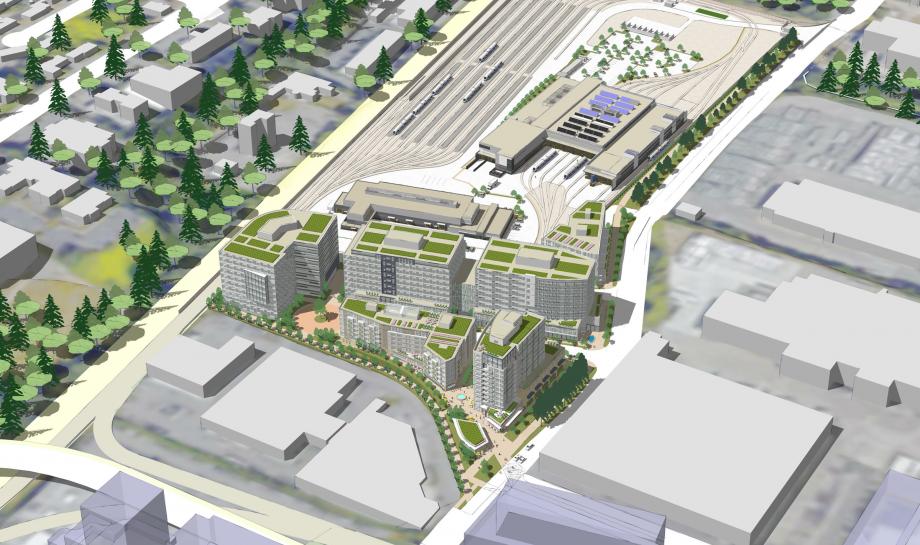
As a consolation, Sound Transit is partnering with BRIDGE Housing to develop a seven-acre parcel abutting its trainyard as transit-oriented development, with 280 of 500 planned homes to be affordable housing set aside for households making between 30% and 80% of area median income. The plan also calls for 400,000 square feet of office space and a park.
Lack of commercial tenants
Inside the Spring District, there are a few amenities for residents to easily access on foot. The best of these is a Bright Horizons childcare and early learning center, located in a courtyard area of the development. There’s also a small quickie mart offering snacks, energy drinks, and prepared sandwiches; a coffee shop; a branch of GolfTec, a golf lesson and equipment chain; and a medspa, in addition to the brewery.
But as the map displaying available commercial spaces below shows, there are also many empty storefronts. This might change as the arrival of light rail service gets closer, but for the time being the vast majority of commercial spaces remain vacant.
The Spring District has also been deeply impacted by the arrival of Meta, the parent company of Facebook, which as Geekwire reported in late 2021 has become the neighborhood’s dominant tenant, purchasing or leasing the majority of available office space. Today Meta’s presence is inescapable in the Spring District, and one of the neighborhood’s most notable quirks is the large amount of private hangout or gathering spaces that are only available to Meta employees. This gives the Spring District more of a campus than neighborhood vibe, and it must feel strange at times for residents who are not Meta employees to be surrounded by places they do not have access to.
In fact, for a neighborhood that was supposed to be designed around walking and transit, using WalkScore.com as a reference point, the Spring District ranks relatively poorly in both respects. For walking, the neighborhood receives a score of 59, although it takes into account businesses, like Rose Persian Market, that are no longer open, meaning the actual score is lower.
Transit access is currently scored at 44. Until light rail service arrives, Spring District residents will have access to only a handful of bus lines, all of which have to boarded on streets busy with vehicle traffic. Route 226 is the easiest to access, running on NE 12th Street and offering service between Downtown Bellevue and the Eastgate Park and Ride near I-90, while RapidRide B has stops as close as 0.3 miles away and runs between Downtown Bellevue and Redmond.
Walking, biking, and rolling connectivity to Downtown Bellevue, however, is a bright spot for the Spring District with improvements made to Spring District Boulevard and NE 12th Street offering one of the most comfortable corridors in the city. Building on these improvements throughout more of the BelRed area, would likely increase the desirability of the Spring District for both commercial and residential tenants. Outside of the protected facilities, biking on the thoroughfares in the area is a harrowing experience.
Expensive housing prices
The fact that both light rail services and neighborhood businesses have yet to arrive in the Spring District is a primary reason why there continue to be many units listed as available on the Sparc and Arras apartment websites, even as the region suffers from a housing crunch. Rents are expensive as well — a survey of advertised costs on Sparc’s website finds that prices for studios run between $2,300 and $2,600 per month, one-bedroom units cost $2,700 to $3,200 per month, and two-bedroom units price in around $3,600 to $4,800 per month.
In comparison, the Ellington at Bellevue, an apartment building managed by Essex Properties, offers lower rents of approximately $2,000 per month for studios and $3,000 per month for two-bedroom units. That is by no means inexpensive, but the building does have the advantage of being located directly in Downtown Bellevue near the public library.
There is no affordable housing available in the Spring District. Reporting by Crosscut in 2014 revealed that the project was awarded a “catalyst project” status by the City of Bellevue which allowed for the developers to pay a reduced fee of “not less than $3.75 per square foot” toward an affordable housing fund rather than construct affordable housing on-site.
At the time in which the developers were paying in to the fund for the Spring District, the surrounding BelRed neighborhood had a much more expensive housing fee at $18 per square foot, which generated some controversy around the project. In retrospect, including on-site affordable housing in plans would have been valuable on many levels: economically, socially, and environmentally. Even at the time, indicators were pointing toward a worsening Eastside housing shortage and questions were being raised about the wisdom of largely exempting the mega-development from contributing to affordable housing:
If the District is built out and populated by Eastside yuppies, and if the approved 10,000 parking spaces are populated by Teslas and BMW M5’s, will that be surprising?
From the standpoint of private capital, it would certainly be a success, but in the Northwest’s bourgeoning conversation about fairness in economic growth, there is a danger that the Spring District will be seen as a huge missed opportunity.
Geoff Spelman, “Bellevue Abandons Affordable Housing in Spring District,” Crosscut, July 14, 2014
Will light rail’s arrival breathe life into the neighborhood?
Until light rail arrives, it’s hard to imagine much new urban life emerging in the Spring District, and even then the neighborhood runs the risk of operating as a company town for Meta.
But if the investors were open to offering affordable housing and commercial space on-site, empty homes and storefronts would likely fill in and bring new energy to the development. Zoning for denser mixed-use buildings in nearby areas of BelRed and ensuring there are safe and comfortable biking connections to necessities like grocery stores and pharmacies would also go a long way in reducing the Spring District’s isolation. Programming events in the public park could provide opportunities for residents to meet and for neighbors to have a good reason to visit and familiarize themselves with the area.
Meta could play a valuable role too. By opening more of its private spaces to the community, the Spring District could increase the amenities it offers to residents and lessen the feeling of Meta and non-Meta employees co-existing in parallel, but separate, neighborhoods within the same space.
Finding the right solutions for the Spring District’s challenges certainly won’t be easy, and the neighborhood will never be the Pearl District. But with so much need for transit-oriented development in Puget Sound, it would be a shame for the Spring District to be left on long-term life support and fail to live up to its own potential to become a thriving community.
Natalie Bicknell Argerious (she/her) is a reporter and podcast host at The Urbanist. She previously served as managing editor. A passionate urban explorer since childhood, she loves learning how to make cities more inclusive, vibrant, and environmentally resilient. You can often find her wandering around Seattle's Central District and Capitol Hill with her dogs and cat. Email her at natalie [at] theurbanist [dot] org.

